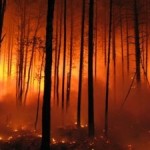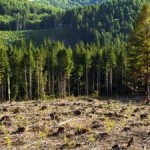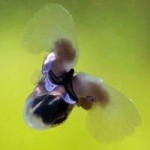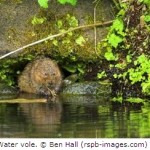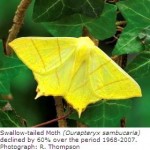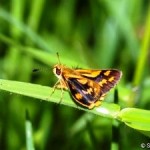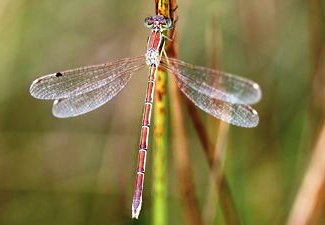
Researchers from the University of East Anglia (UEA) have helped create the first report to show how Britain’s landscape and wildlife are under threat from climate change and extreme weather.
Published on May 9, the report reveals what is happening in the UK’s countryside, how climate change is contributing to those changes, and what could happen in the future.
It reveals how birds, bugs, butterflies, plants and some mammals are in free fall decline – as extreme weather, climate change and man’s desire for land combine to make this one of the worst times ever for British wildlife.
Five researchers from UEA were among 40 of the country’s top environmental scientists chosen to produce the “Terrestrial Biodiversity Climate Change Impacts Report Card 2012-13”, which sets out the key trends in how UK’s biodiversity is responding to climate change.
The full report shows that last year was the worst breeding year on record for birds, the cold snap caused three times more Barn Owls to perish, 70 per cent of butterfly species are in decline, the UK only has two per cent of its wildflower meadows left, and hedgehogs are disappearing as fast as the tiger – dropping from 36 million in 1950 to just one million today.
The UEA researchers produced two of 15 scientific reviews underpinning the report, which will be used to advise government policy makers, land managers and environmental consultants on the current evidence of climate-induced changes to habitats and species. The report has also been used as part of a special Channel 4 News series looking at the impacts of climate change on Britain’s Green and Pleasant Land.
Dr. Hannah Mossman and Prof. Alastair Grant from UEA’s School of Environmental Sciences, together with Prof. Anthony Davy from the School of Biological Sciences, produced a comprehensive overview of how climate change is threatening the UK’s coastal habitats. Meanwhile, Dr. Mossman, along with environmental scientists Dr. Aldina Franco and Dr. Paul Dolman, revealed how climate change is altering our invertebrate fauna.
Threat to Coastal Habitats
The UEA report on coastal habitats shows how rising sea levels are threatening salt marshes, cliffs, coastal grazing marshes and sand dunes.
Dr. Mossman said, “The UK has 17,381 km of coastline but its habitats are under threat due to climate change.”
“Coastal habitats support many species including internationally important wintering populations of birds. They also act as sea defences, nurseries for fish and are used for recreation.”
The report shows how 17 per cent of the UK coastline is eroding and that sea levels are predicted to rise even further – particularly in East Anglia and in the south. By 2095, the sea level is predicted to have increased by up to 70 cm in London.
“These predicted sea level rises will result in significant losses to coastal habitats. Soft cliffs are particularly vulnerable, such as in Suffolk where cliffs are retreating at a rate of up to 4.7 meters per year.
“The recent wet winter in East Anglia has made things particularly bad – it has led to increased erosion and a rapid retreat of the cliffs and dunes all around the east coast.”
Prof. Alastair Grant said, “Much of the East Anglian coastline is low-lying, and therefore, vulnerable to coastal flooding. This land includes homes, as well important Grade 1 agricultural land and conservation areas such as Cley Marshes. As a result of this, there have been many managed realignment schemes in the area, including at Brancaster, and Tollesbury and Wallasea Island in Essex, creating new salt marsh habitats, which can act as a flood defence.”
Prof. Anthony Davy said, “Whilst these created marshes are better than losing our precious natural salt marsh altogether, they lack important species and are not a good enough replacement. We are currently developing ways of improving them for biodiversity.”
Dr. Hannah Mossman said, “Coastal habitat protection and creation is complex and the management decisions we take will have a large part to play in determining how coastal habitats will look in the future.”
Impact of Climate Change on Invertebrate Fauna
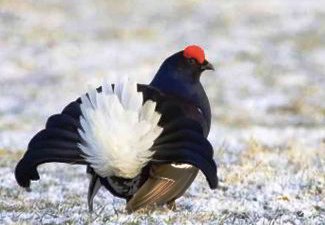
A second UEA report shows how the UK is rich in invertebrate biodiversity, with more than 24,000 species of insect alone. But warmer temperatures have led to new species colonising southern England from continental Europe – such as the Southern Emerald and Willow Emerald Damselflies.
Dr. Mossman said, “The first known record of the newly colonising Willow Emerald Damselfly was from Suffolk in 2009. It has gone on to colonise areas of Suffolk, Norfolk, Essex and north Kent.
“The Southern Emerald was first spotted in the UK in Norfolk in 2002,” she added.
The report reveals how climate change has also made the UK suitable for new pest species, such as the Oak Processionary Moth. And further temperature rises will make the UK suitable for a large number of other pest species.
“Rising temperatures have led to many existing species moving northwards, sometimes allowing them to expand their range. However, habitat loss in the UK has been extensive, causing declines in many invertebrates over the past century. Today, remaining patches of habitat are small and poorly connected to each other. This means that it will be difficult for species to move northwards as the conditions become unsuitable for them.


